Some of the most hyped food in the country can be located in Dilli, more specifically, the chaat available in the old city’s Chandni Chowk. Popular culture, film, travel documentaries, social media, urban legends, and pompous boasting of the city’s food culture by overly proud Dilliwallahs has created an aura of mystique around these enchanting little snacks available in the by-lanes of Delhi-6, to the extent where it was not uncommon to find stalls and shops labelled “Delhi ni Chaat” or “Delhi ni Panipuri” in khau gullies as far as Amdavad, where I grew up. Honestly, the opportunity to spend three years exploring the food of this promised land played an important role in my decision to attend the University of Delhi as well. Such was the hype of Delhi Chaat, I was willing to craft my career goals around it.
It was a great disappointment to realise upon reaching the city that the fame achieved by the city’s chaat may be nothing more than empty hype. Let alone other cities equally as renowned for their chaat such as Lucknow or Benaras, the quality of chaat in Delhi could not even match that of Amdavad – a city which is not particularly known for it, and where chaat is rare to come across, barring Pani Puri vendors who are always glad to quickly whip up a Sev Puri or Dahi Puri for you. Khodaa pahaad, nikli chuhiyaa. An apt description of Delhi’s Chaat.
This of course, may raise the question – What constitutes a good chaat, and why does Delhi Chaat not work? I have briefly answered this question in an earlier piece on Natraj Dahi Bhalla (which is perhaps the only place in the city whose chaat I rate as firmly above average), but I will try to give a more expansive theorem of chaat in this article, as well as outline why Delhi chaat does not work, using said theorem.
What chaat is, at its fundamentals, is a careful act of balancing the fragility of extremes. Sour, sweet imli juxtaposed with a garnish of freshly chopped green chilli, that mixture in turn contrasting with the cold, flavourless dahi while raw ginger elevates every second bite that you have. Crispy aloo tikkis doused in creamy dahi with a sprinkle of tiny, crunchy pieces of panipuri shells, or a smooth, thick, runny tamatar chaat topped with sev and namakpara. This balance and these contradictions must exist on two levels – flavour, and texture. The first out of those two is arguably more noticeable, and can be achieved through a variety of means, such as playing around with chutneys, spices, raw ingredients, fruit (not necessarily something like an apple, but a sprinkle of pomegranate seeds help elevate a dish), and garnish – which tend to have quite strong, concentrated flavours to ensure they balance each other out and cut through the mildness of the base materials, such as the dahi, the papdi or the aloo – which have their own subtle flavours that act as a foundation to the dish as a whole, by bringing it all together to give the dish a well-rounded definition, but are not strong enough to be remarkable on their own.
These are the very fundamentals of what I consider to be the hallmark of quality chaat. Roughly speaking, they can be summarized into three points, which I term as the Axioms of Chaat, which are -
A gentle balance between multiple, strong, often completely contrasting flavours.
A juxtaposition of two, or more, varying textures, with one complementing the other.
Ingredients that make you feel the intensity of the chaat, and are not mild in flavour. After all, the words we use to describe a good chaat are “chatpata”, “teekha”, “khatta-meetha”, and not “halka” or “naazuk”.
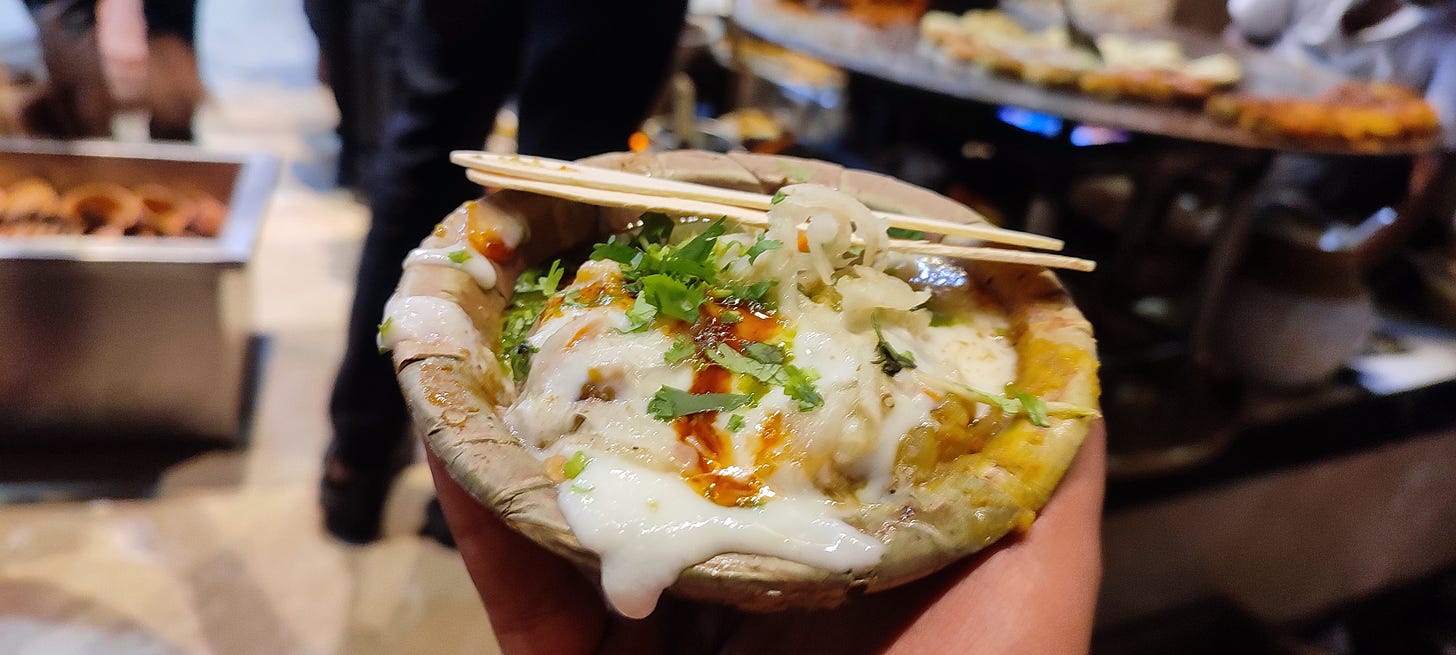
Of course, it is possible to make perfectly edible chaat while only using 2 or 3 of these aforementioned principles. Natraj in Chandni Chowk has been serving Dahi Bhallas for eight decades now, and uses crispy aloo tikkis dipped in a concoction of ice-cold dahi and sweet and sour imli, and topped with a sprinkle of what I suppose is a mixture of chaat masala and kali mirch. The complexity that is to be found in the chaat of UP, such as Deena’s wonderful Palak Patta Chaat doused in dahi, green chutney, sweet chutney, ginger, mooli, carrots, coriander leaves and whatnot, isn’t to be found here. However, the quality of ingredients maintained by Natraj, despite being one of the more popular spots in Chandni Chowk, is not to be underestimated. The dahi is thick and velvety, the imli chutney is strong, and its sweetness and slight sourness beautifully cuts through the comparatively bland yet crispy tikki and aforementioned dahi. Hence, despite being in violation of the first axiom mentioned above, Natraj tends to be an enjoyable place to visit, and is one that I oft recommend to people.
The other place that I quite like in the area is Bishan Swaroop, a small stall just outside the ancient Bank of India branch, serving a variety of fruit and vegetable chaats to their patrons. Their Aloo Chaat has a crispy texture and a wonderful spice mix, complemented by a bit of lemon on top. Their Fruit Chaat too, is quite simple, consisting of pineapple, papaya. pears, watermelon, bananas, melon, fried aloo, the same spice mix as before and a squeeze of lemon on top. This wonderful blend of spicy, savoury, sweet and sour flavours is blended together by the chutney they add on top - made of the extract of pomegranate seeds, which is quite unique and something that I’ve not seen before.
If you’re enjoying reading this review so far, consider SHARING my newsletter for free with your friends and colleagues, and help my WEEKLY food and travel musings reach a larger audience! Join the journey, and bring people on for it as well!
Ashok just opposite Gate 3 of the Chawri Bazaar Metro Station is another decent place to eat chaat. The quality of ingredients here is OK, certainly not as vibrant as those of Lucknow or Benaras - a bit muted in comparison which takes away from the complexity of it, but the construction is decent enough for it to be an enjoyable experience overall. Both the Aloo Chaat and the Papdi Chaat have a similar make - pudina and a sweet, red chutney on top of a base of thick, chilled dahi and the base of either the aloo or papdi. I’d say avoid the former, though - the thinly sliced, unseasoned, unflavoured pieces of aloo and kachalu taste depressing; stick to the papdi chaat, which is a much stronger, sturdier base to the heavy potion on top. Lastly, I’m not a big fan of Kalmi Bada, but the Kalmi Bada at Ashok is one of the best I’ve ever had - the pudina water is tangy, spicy and strong, and the vada is spongy, soft and well-flavoured. Another classic spot, just look out for the various imposters scattered across the area.
Delhi has a knack of serving quirky food items that are difficult to come by elsewhere - whether it be the stuffed qulfis popularised by Kuremal, or the stringy, stretchy shami kebabs at Bhaijaan. One such spot is Manohar in the electronics market - who sell a layered, flaky, crunchy “Japani Samosa” filled with standard aloo masala as any samosa is, served with a dark, hit, spicy chhole on the side and an almost radioactive green chutney to go with it. This is something that I've only ever seen before at one other place - Beera Samosa in Amritsar, where it is served as a “Satpura”, named after it's seven layers, although the origins of the name “Japani Samosa” are lost to history. Some slop outlets online peddle a myth that it was named after the Japanese who fought in WWII, as the shop was invented at around the same time, although I'm not sure how credible that myth is, given the Japanese did not particularly fight in North Indian land, and the bombing of Hiroshima or Nagashika is likely to have little impact on the naming of an Indian shop (there were much more historically significant events to India in the same period of time). The flaky, layered samosa is enjoyable on its own, although I don't think it's particularly convenient to consume it with a chhole masala.
These are probably the only chaat places in Chandni Chowk that I somewhat enjoyed; one of them isn’t even a chaat place, and the other relies on fruit for its taste. The other spots I’ve been to in the area have been firmly below average. Jung Bahadur’s Kachoris were too one-dimensional, and felt over-reliant on red chilli powder. The intensity of flavour at Shree Balaji Chaat Bhandar and Padam Chaat Corner are just too mild; they don’t cut across each other as well as the chaat of Lucknow or Benaras does.
And Padam’s Golgappas are, in a way, a microcosm of everything wrong with Delhi’s food culture. I can’t be expected to write positive reviews of a place that has unflavoured, chopped aloo and unseasoned chana in their golgappas. I am not a huge fan of the Delhi culture of sooji golgappas anyways - I feel that a good golgappa (or panipuri, or phuchka, or whatever you call it) is marked by the contrast in texture between the crispy poori, and the mashed, runny aloo (or matar, in some places), with the water acting like a bridge between the two. The only saving grace of the dish was the tangy imli water - which did lend a unique, rustic taste to the dish, but wasn’t enough for me to fully love it.
I am not a fan of the local soda sold in Delhi - called Banta or Lemon depending on who you ask. It is quite refreshing, but is quite flat, lacks the fizz that a soda should have; it’s not strong enough to fulfill my soda cravings. Pt. Vedparkash Lemon Wale opposite the Town Hall in Chandni Chowk serves a version of this drink, which is good by Delhi standards, but sub-standard in the larger picture.
Lastly, a very popular spot in the area, Lotan Kulche, which I found to be a bit too oily and one-dimensional; heavy on red chilli powder with little else to offer.
To be honest, I accept that there may be chaat places outside Chandni Chowk that are better than this, but I have low expectations from a city that adds chopped, not mashed, aloo to its samosas, and phased out soup in favour of mayonnaise as a side to momos. Nor is this a comprehensive list of Delhi Chaat or Chandni Chowk eateries, but given the disappointing experiences I’ve had from these legacy shops (and several other nondescript shops that I’ve not mentioned here), you can hardly fault me for being dissuaded from exploring more. As far as Old Delhi food goes, I have had excellent experiences with non-vegetarian food in the area around Jama Masjid, and have explored that part of the city extensively, but when it comes to the vegetarian side of the locality? Would recommend you to avoid it.
Admittedly, I was able to appreciate the taste of many of Chandni Chowk’s chaats on my last visit there earlier this year, but I’d still consider most of it to be firmly average at best, and nothing that warrants the extreme hype that it has in popular culture.
Natraj Dahi Bhalla:
Dahi Bhallas (7/10)
Bishan Swaroop:
Fruit Chaat (8.25/10)
Aloo Chaat (8/10)
Ashok Chaat Corner:
Kalmi Bada (9/10)
Papdi Chaat (5.75/10)
Aloo Chaat (4.5/10)
Manohar Dhaba:
Samosa (8.5/10)
Jung Bahadur Kachori Wale:
Kachori (4/10)
Padam Chaat Corner:
Papdi Chaat (5.75/10)
Golgappe (4.25/10)
Pandit Ved Parkash Lemon Wale:
Lemon Soda (5.5/10)
Lotan ji Kulche:
Chhole - Kulche (4/10)


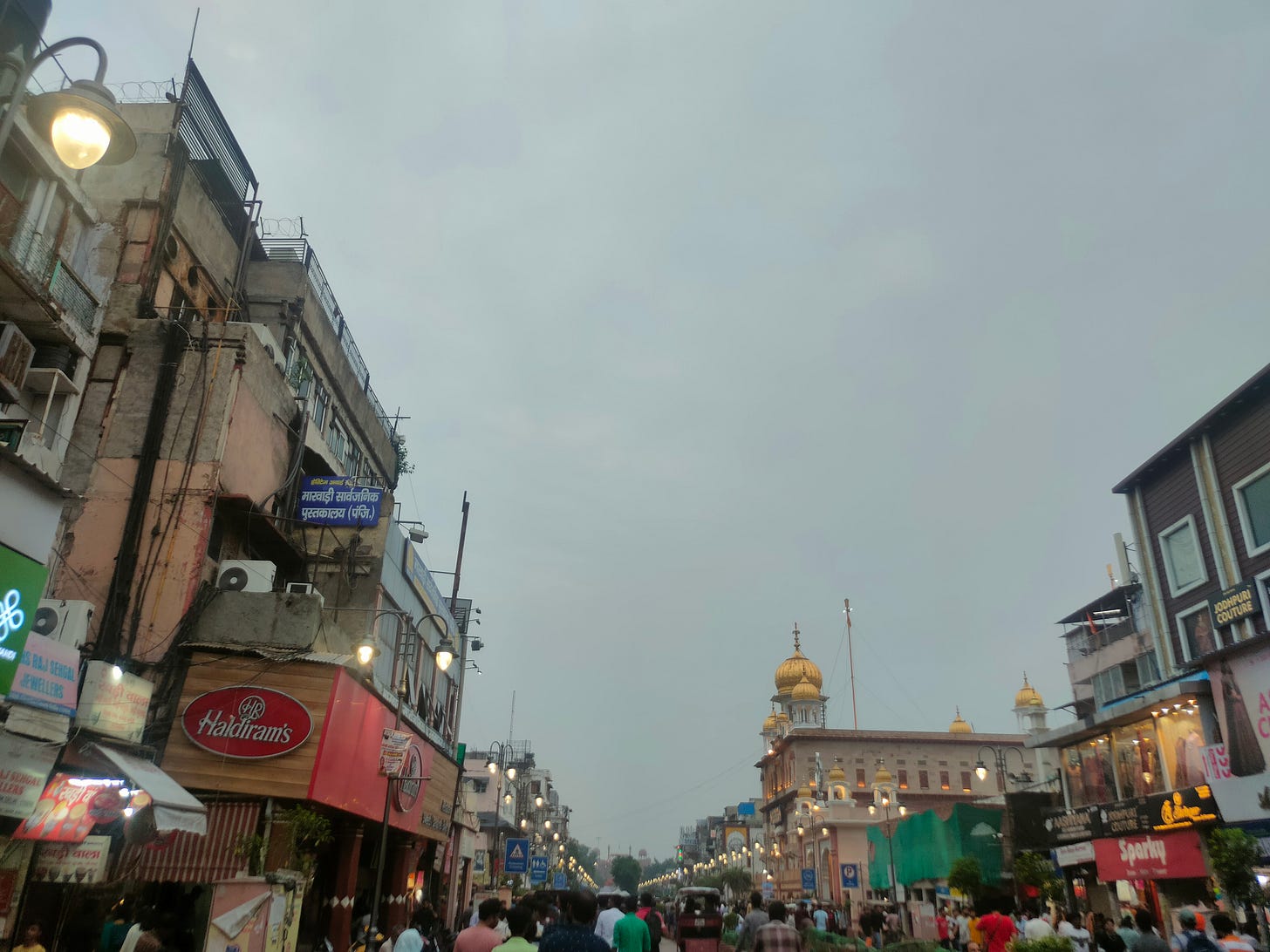
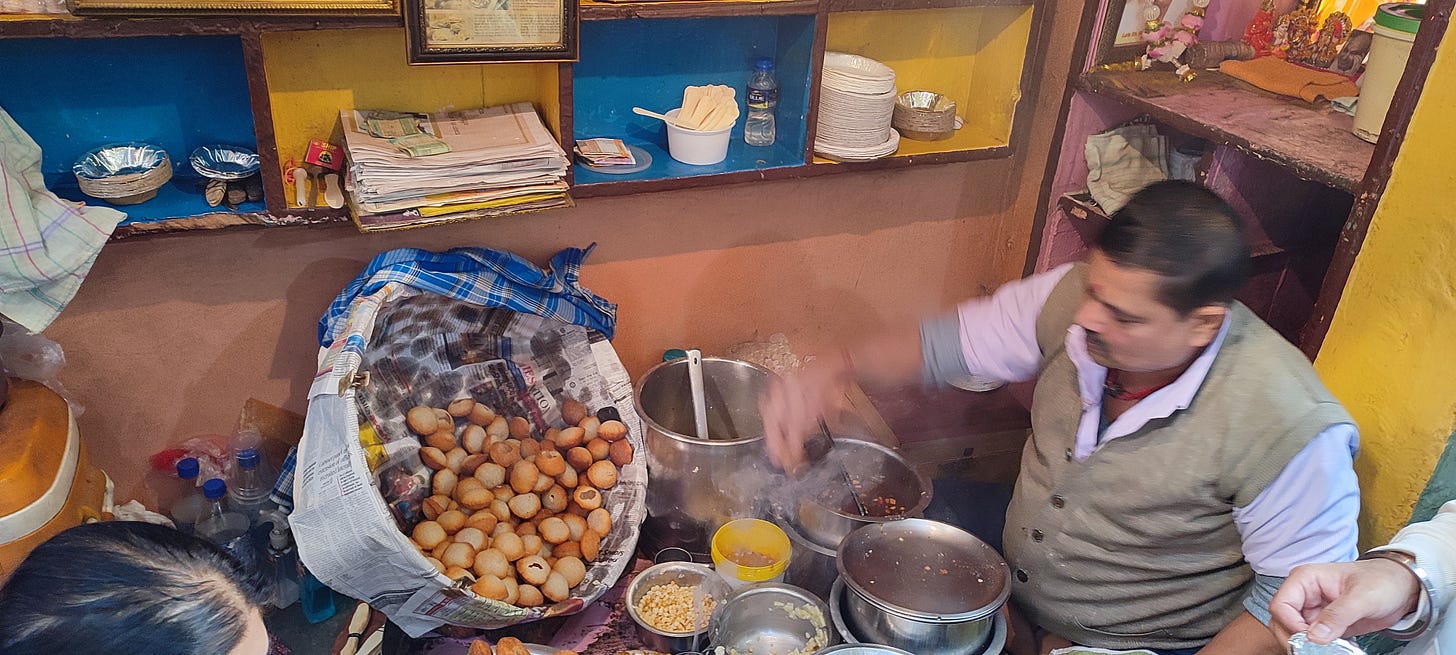
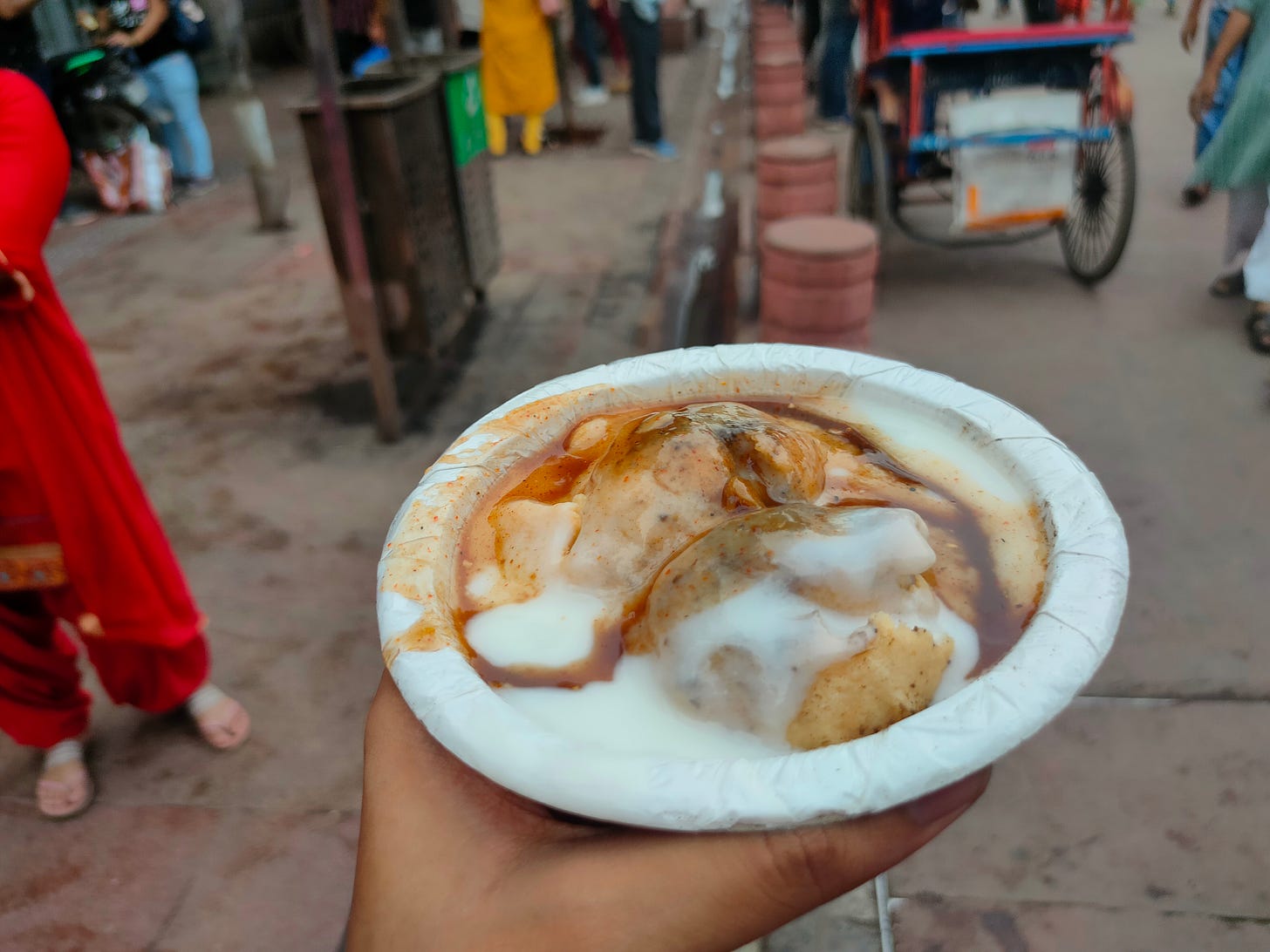
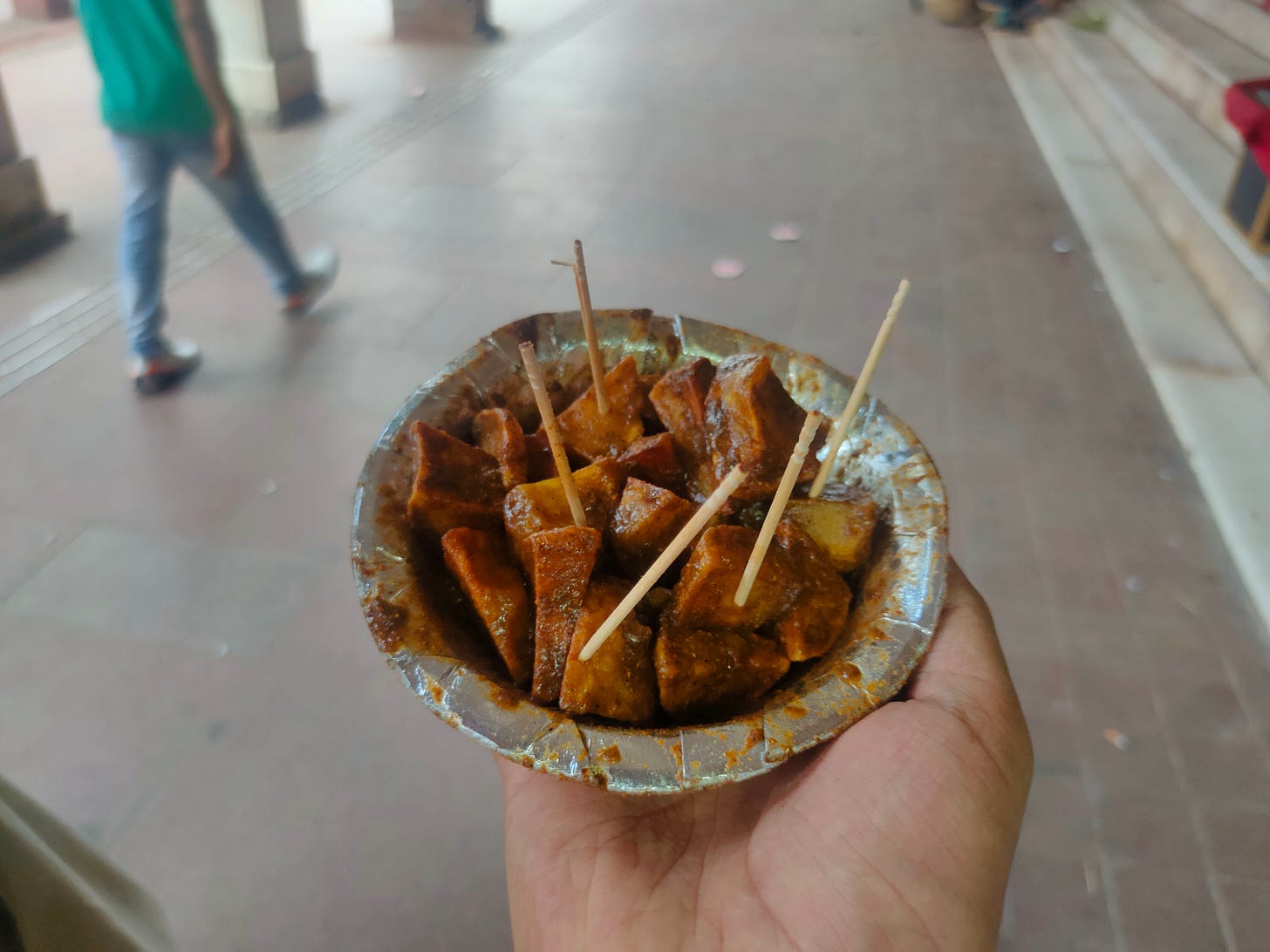
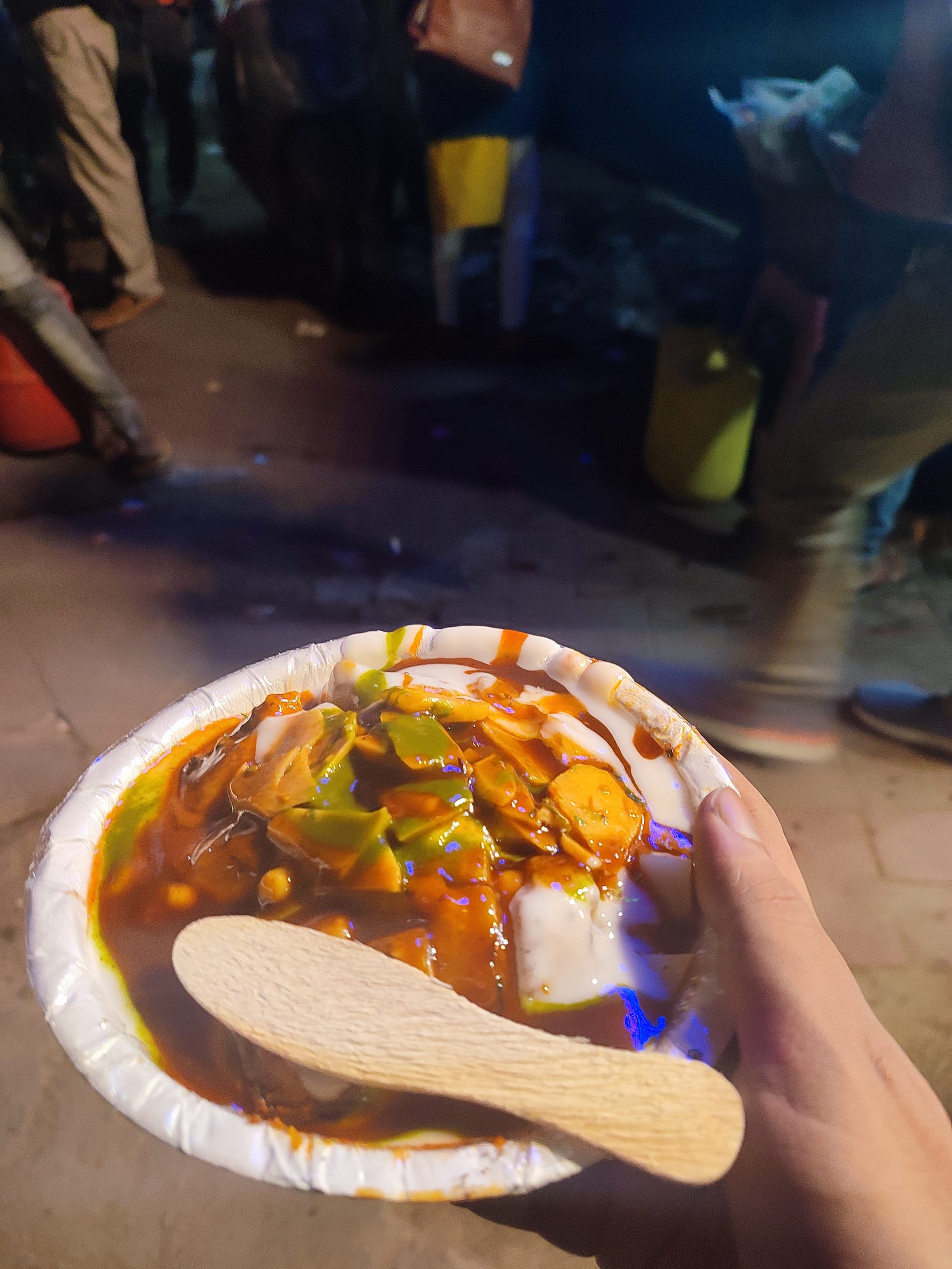
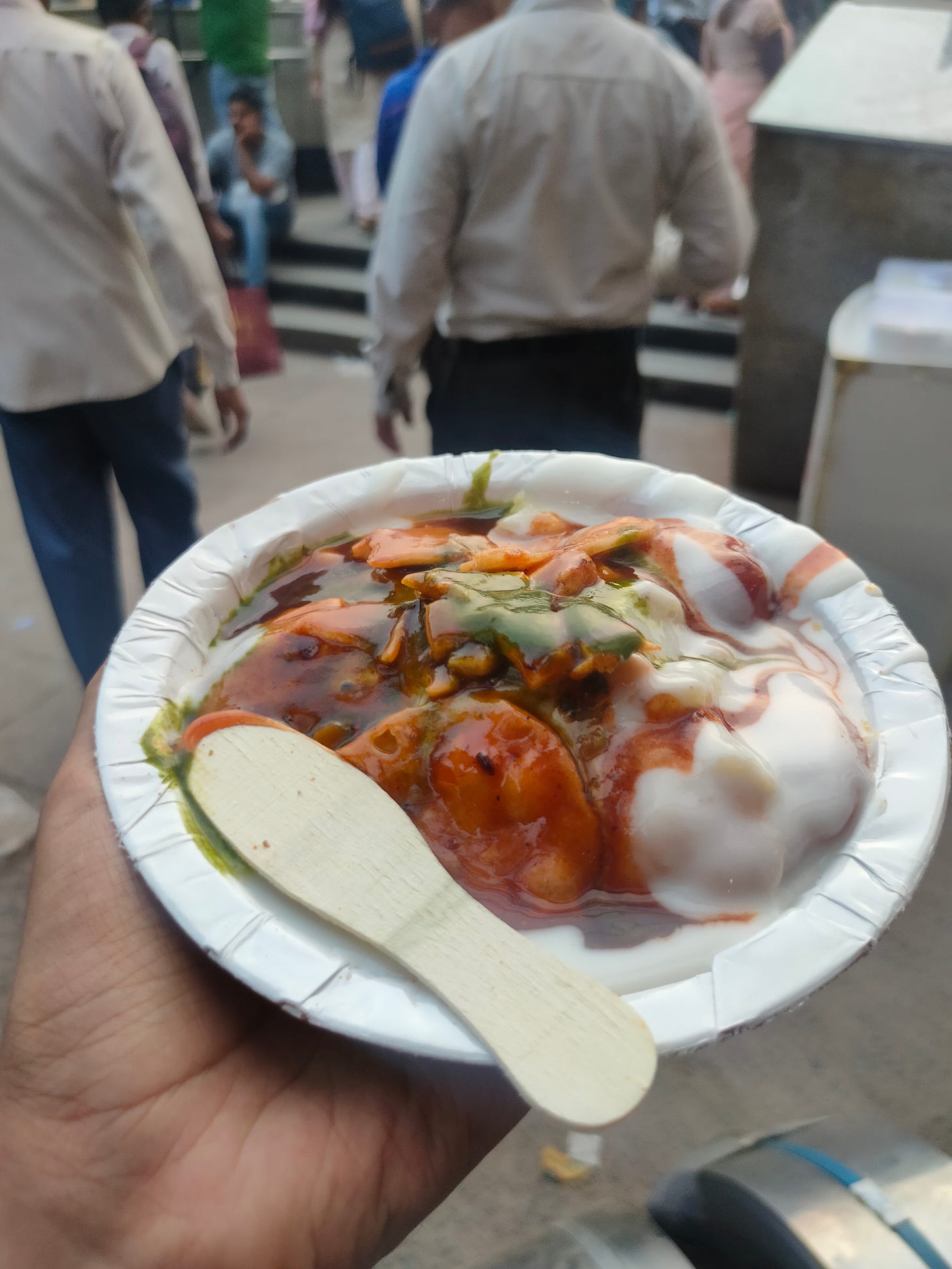
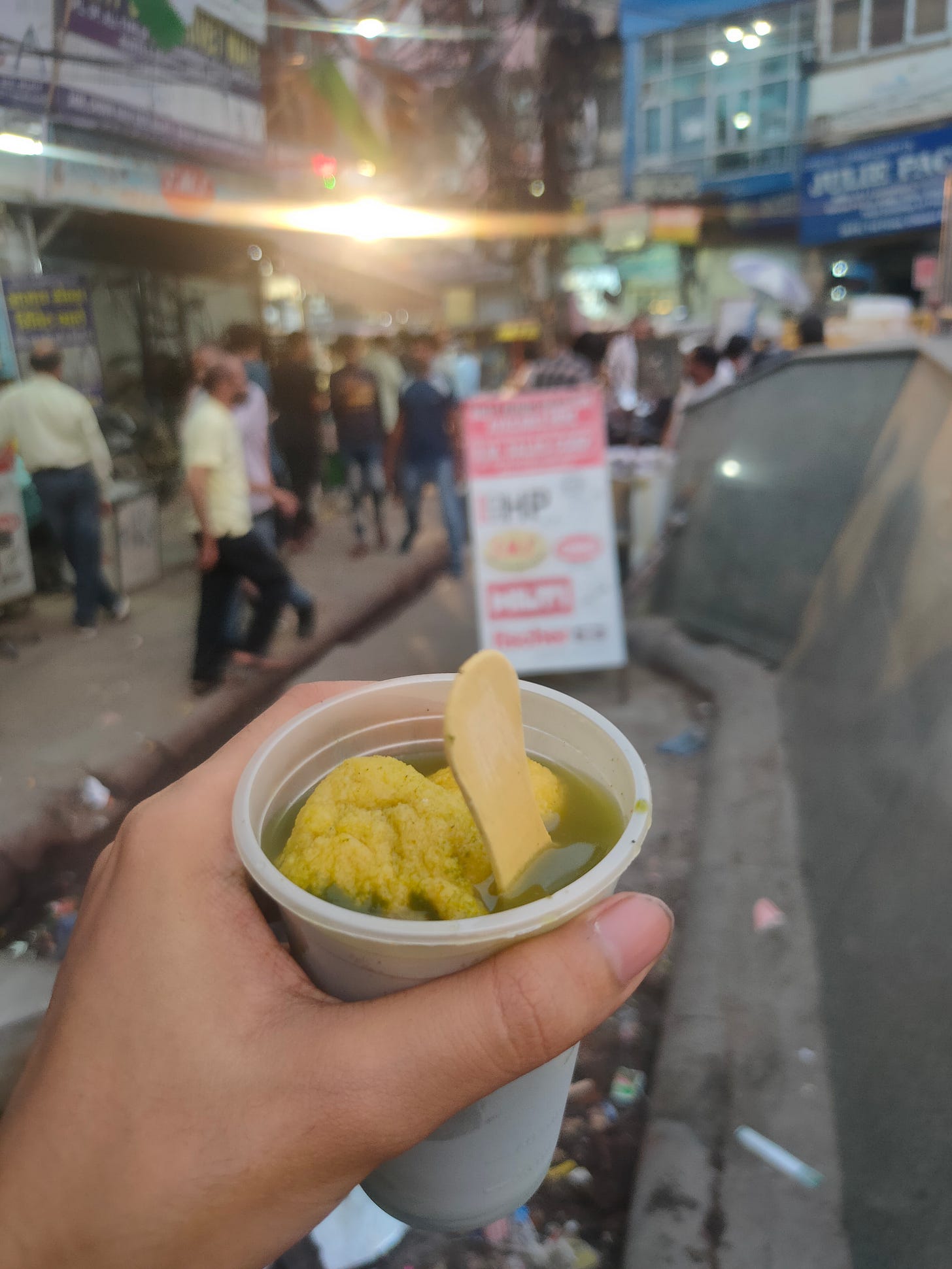
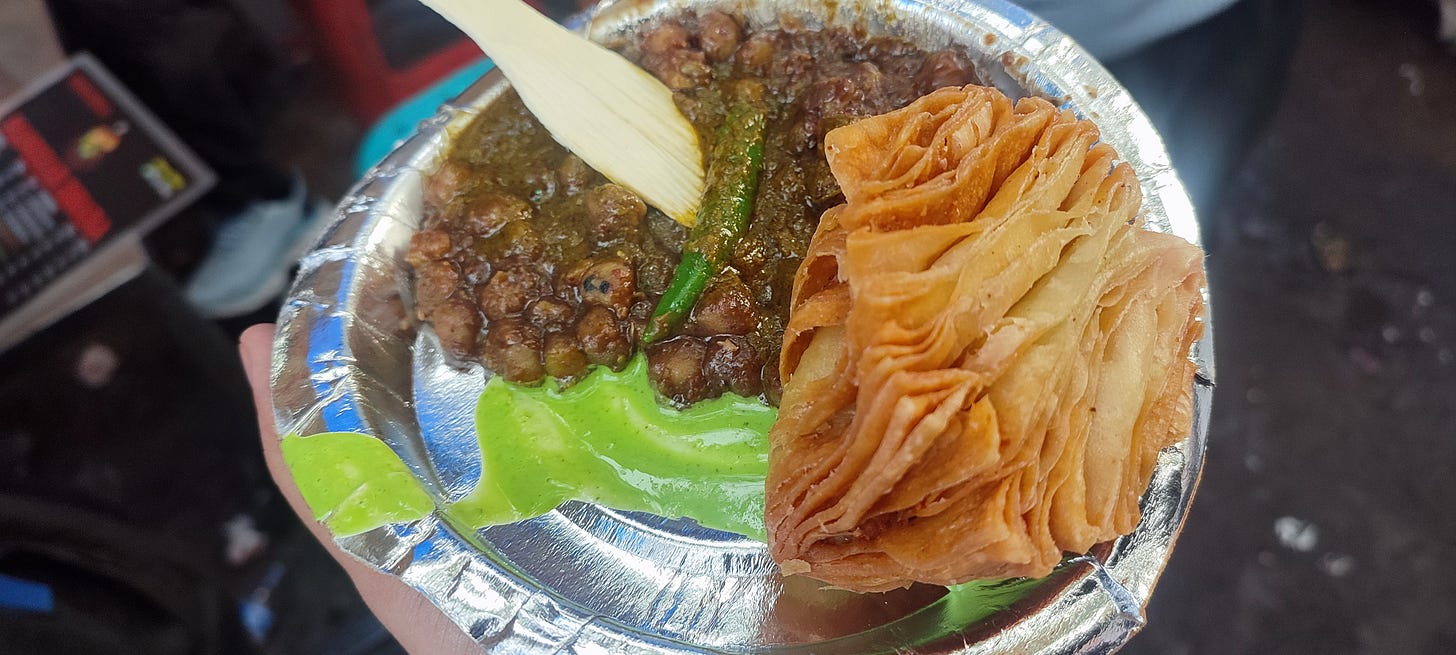
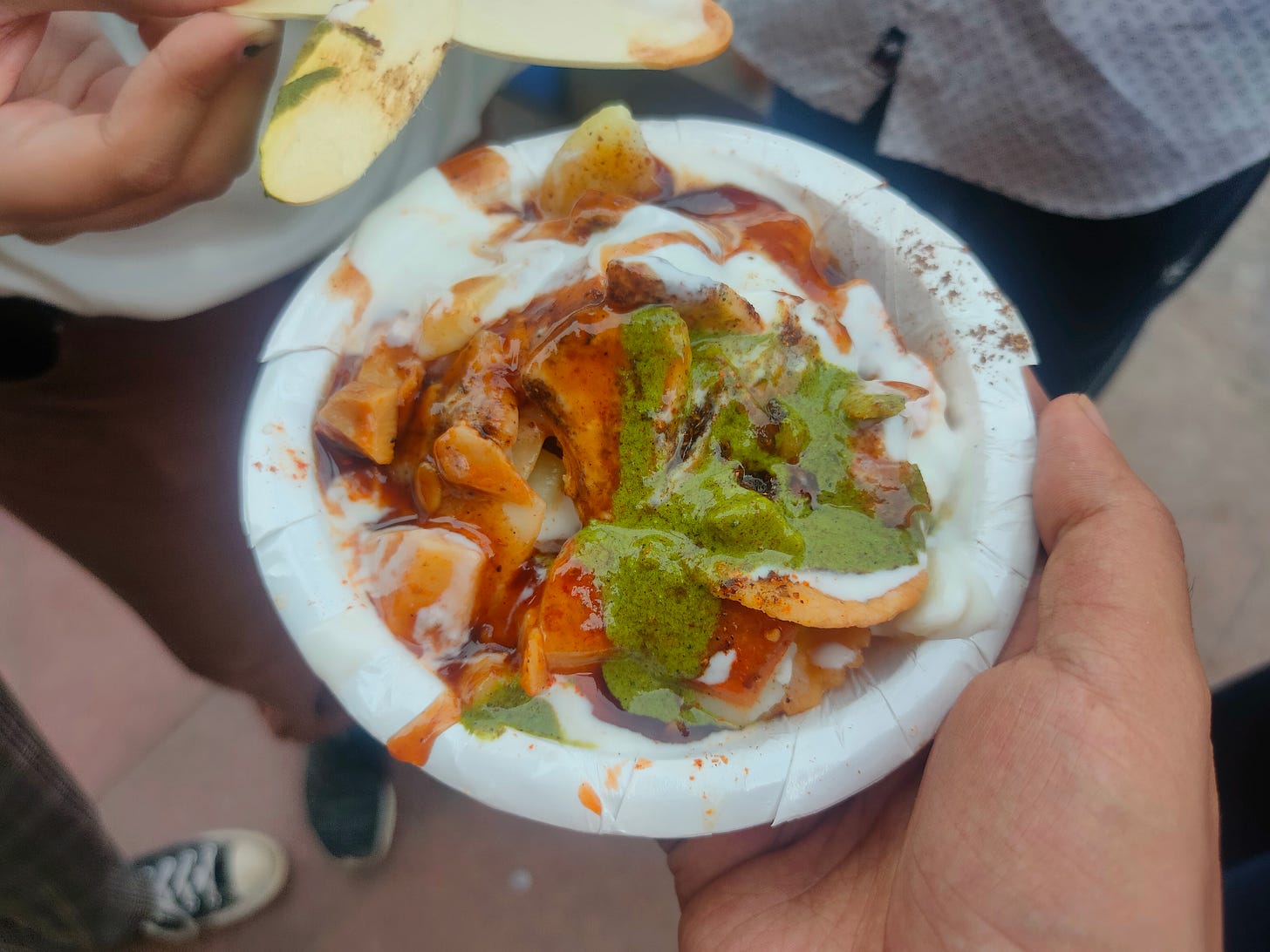

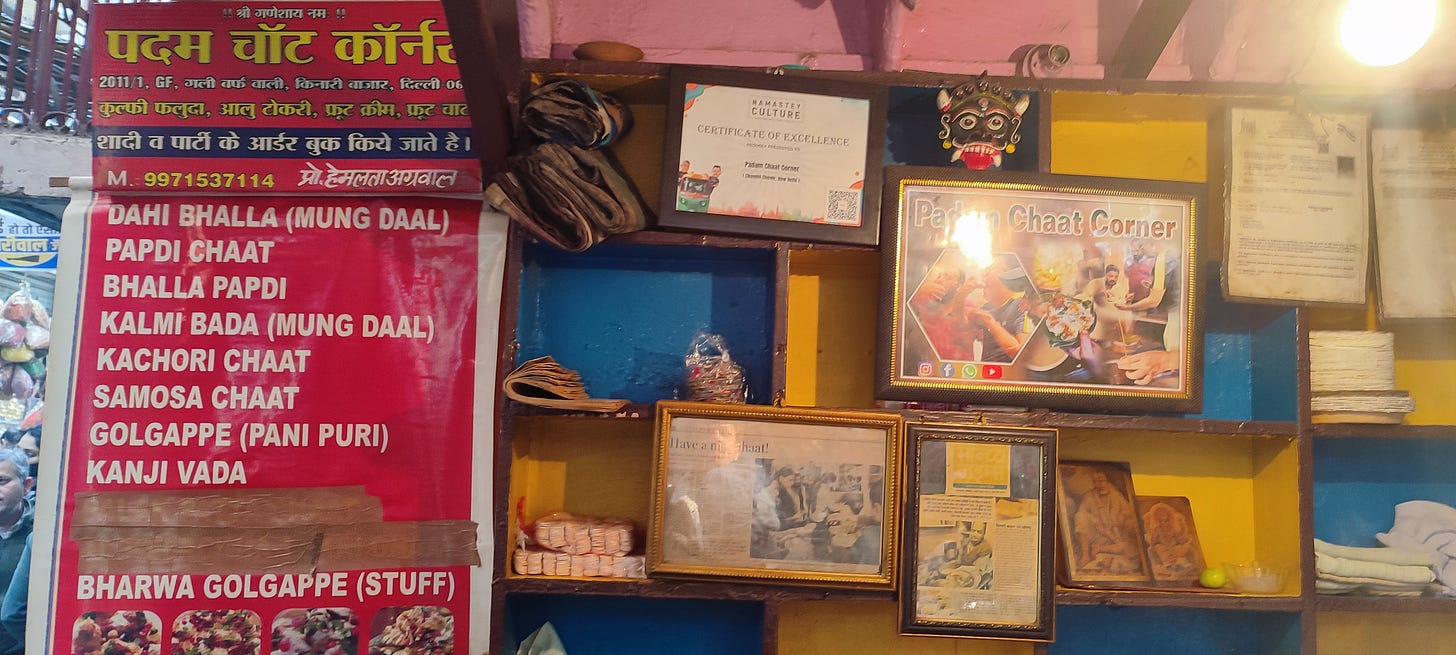
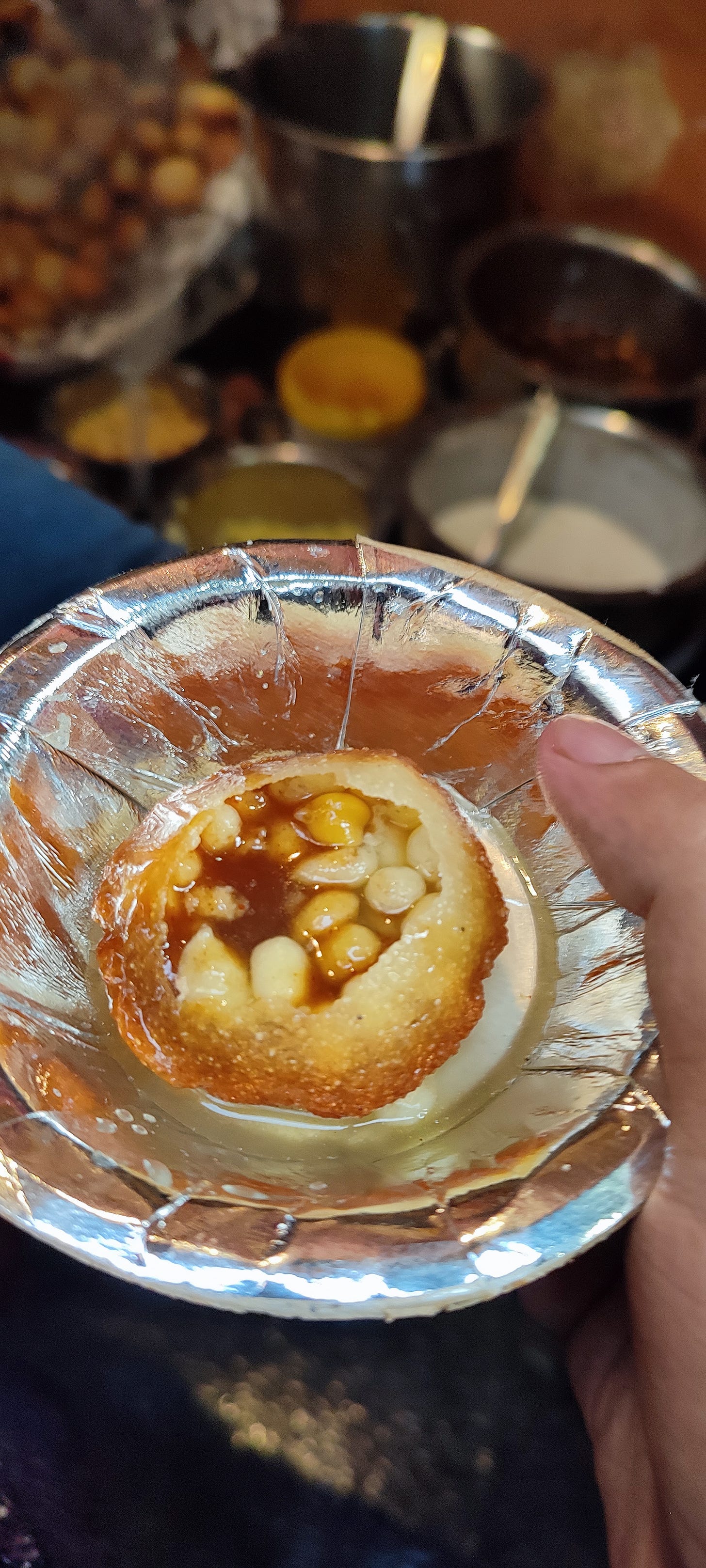


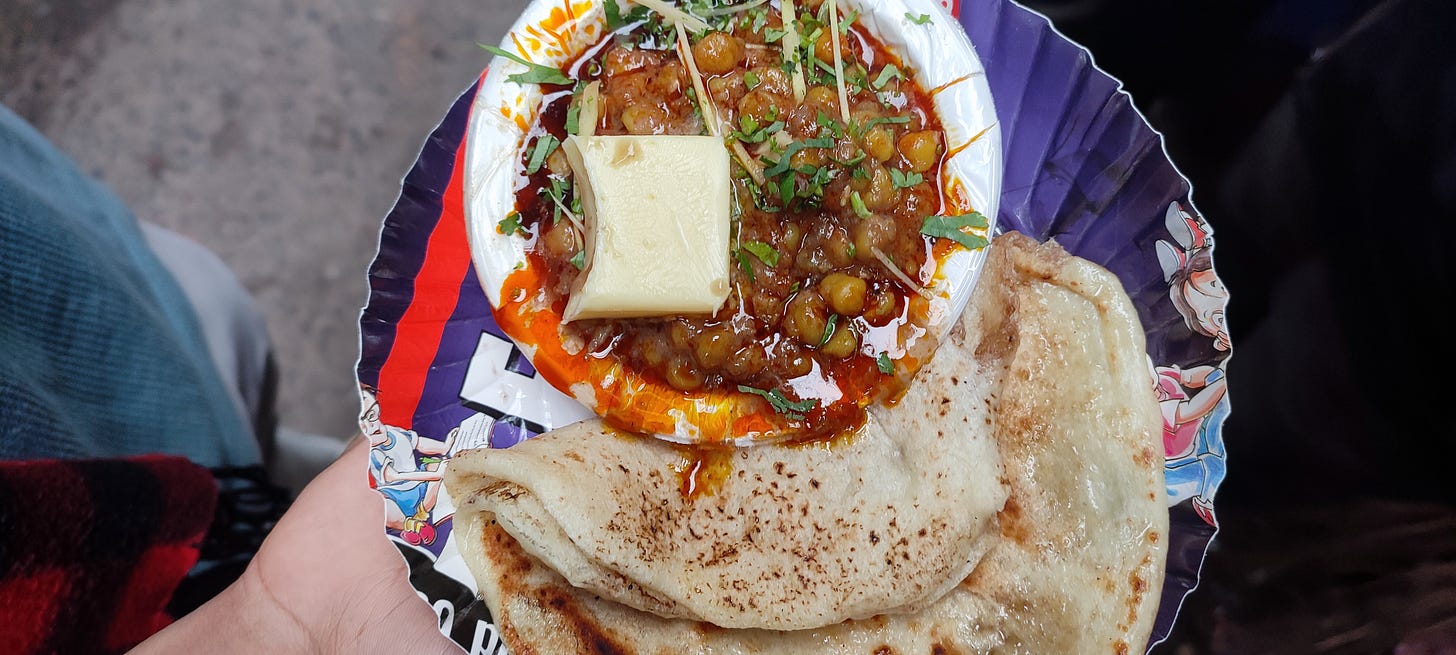
Kamla Nagar has a much more consistent veg food experience than Chandni chowk. Having grown up in these parts none of us ever rated Cc food. Chache's chole bathure is world class, and there are several similar quality items all over bungalow road, core kamla nagar bazaar area and ghanta ghat
Love your posts!